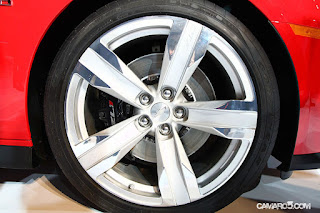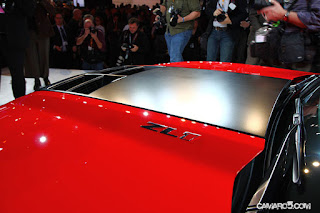Sudden acceleration in Toyota Motor Corp. vehicles is caused by mechanical rather than electronic systems, a federal study found, but regulators said they are considering requiring automakers to install a trio of safety systems designed to reduce the risk on future vehicles.
Transportation Department Secretary Ray LaHood asserted that a 10-month probe conducted primarily by NASA engineers found no evidence that electronic defects or software code errors could account for the thousands of reported cases of sudden acceleration in Toyota and Lexus vehicles over the last decade.
The study concluded the only defects that could cause sudden acceleration involved floor mats that could jam the gas pedal and accelerator pedals that could become stuck. Toyota has already recalled 8 million vehicles in the U.S. to fix those problems.
Even so, consumer complaints of sudden acceleration affect vehicles from all manufacturers and as a result, the National Highway Traffic Safety Administration has begun taking steps to write new standards that could improve safety, LaHood said at a news conference Tuesday.
The auto safety regulator will begin consideration of a rule to require so-called brake override systems, which cut off engine power when a motorist puts a foot on the brake pedal. It is designed to stop a car, even if the gas pedal is jammed.
The agency also will consider standardizing push-button start systems, which can confuse motorists trying to shut off a runaway engine. In other cases, vehicle owners have accidently let engines with push-button starts continue to run after parking.
Finally, the agency wants to require all new cars to be sold with event data recorders, or black boxes, which could help determine the cause of many crashes.
Separately, the agency also is beginning research to determine whether certain pedal designs and placements can reduce the tendency of drivers to hit the wrong pedal.
NHTSA senior officials said the NASA study closely examined 58 cases of sudden acceleration in Toyota and Lexus vehicles and found about two-thirds appeared to involve a driver accidently hitting the wrong pedal.
The results of the study, which was assisted by a team of engineers from NASA Langley Research Center, is good news for Toyota, which has contended for more than year that there is no defect in the design or performance of engine systems that have for the last decade relied on a high degree of electronic control.
"We believe this rigorous scientific analysis by some of America's foremost engineers should further reinforce confidence in the safety of Toyota and Lexus vehicles, " said Steve St. Angelo, Toyota's chief quality officer for North America.
The $1.5-million study, launched last March, examined nine vehicles that Toyota repurchased from owners after sudden acceleration reports. They were inspected and later subjected to electromagnetic radiation at a special Chrysler testing chamber. The NASA team reviewed 280,000 lines of software code, looking for glitches that could trigger the engine to unexpectedly go to full power.
"The jury is back, the verdict is in: There is no electronic-based cause for unintended high-speed acceleration in Toyotas, period," LaHood declared.
Nonetheless, the sudden acceleration problems have blemished Toyota's once-sterling reputation for quality. Along with floor mats and gas pedals, the Japanese automaker has been plagued by defects in steering components, structural parts, brakes and engine control circuit boards, leading to recalls of millions of other vehicles.
The company has also been slapped by regulators for not disclosing problems when it became aware of them. In December, Toyota agreed to pay $32.4 million in fines for failing to promptly notify regulators and issue a recall when it knew of defects involving the potential for floor mats to entrap pedals and for another defect that could cause a total loss of steering.
And last April, the company agreed to a record $16.4-million fine for delaying notification to regulators about the sticky pedal problem. The fines were the largest ever levied against an automaker.
Complaints about sudden acceleration from Toyota and Lexus owners surged after the automaker adopted the so-called drive-by-wire system starting in 2001. For some Toyota models, reports of unintended acceleration increased more than fivefold after drive-by-wire systems were adopted, according to a Times review of thousands of consumer complaints filed with regulators. Transportation Department officials attributed the surge to publicity, even though it wasn't until 2009 that sudden acceleration became a buzzword.
Toyota said Tuesday that its fiscal third-quarter profit dropped 39%, mostly because of the strong value of the Japanese yen, though company officials also acknowledged they have not fully recovered from a string of recalls and regulatory fines in the U.S. market. Toyota was the only major automaker to report a U.S. sales decline in 2010.
Some Toyota drivers who had reported experiencing sudden unintended acceleration said they had not changed their minds about the possibility of a hidden defect, rejecting LaHood's assertion that only floor mats, sticky pedals or driver error could cause the problem.
"It doesn't resolve my concerns," said Jeffrey Pepski, a suburban Minneapolis financial consultant who complained to NHTSA after his Lexus ES suddenly accelerated on a Twin Cities freeway. During the 2007 incident, which occurred long before sudden acceleration became a national buzzword, Pepski said he put his foot under the gas pedal and attempted to lift it, eliminating the possibility of pedal entrapment or a sticky pedal.
"Just because they couldn't reproduce the problem doesn't mean it didn't happen," Pepski said. "All it means is that they couldn't reproduce it. I stand by my story."
Rhonda Smith, who testified before Congress last year that her Lexus ES accelerated on its own and almost killed her, called the NASA report "very upsetting" and said she still believes the vehicles have some other defect.
"There's still something else out there," said Smith who claimed that during her acceleration event she was able to look at her feet and see that they were correctly placed and that the floor mat was not interfering with the gas pedal.
NASA engineers were somewhat more guarded in describing their findings than LaHood. "Our detailed study can't say it's impossible, but based on the testing and analysis performed, we find that the malfunctions in electronics are an unlikely cause of large and unintended acceleration," said Michael T. Kirsch, the leader of the NASA study. The formal language of the report was even more equivocal, acknowledging that it is "not realistic" to prove that Toyota's electronics can not cause sudden acceleration and that "the absence of proof … does not vindicate the system."
The consideration of new regulations announced by LaHood is a victory for those who have argued that today's high-tech autos need electronic safeguards. When an off-duty California Highway Patrol officer and his family were killed in August 2009, Toyota acknowledged the Lexus ES did not have a brake override system that many other manufacturers had adopted.
Shutting down the engine with the vehicle's push-button start system was considered potentially confusing. And Toyota, unlike other manufacturers, long refused to provide tools for outsiders to download the information on its event data recorders.
Don Slavik, a Milwaukee lawyer representing a sudden acceleration victim, has been coordinating the work of plaintiff attorneys preparing to argue that there is in fact an electronic problem in Toyota vehicles. He and other attorneys have hired a team of engineers and scientists to conduct their own investigation into Toyota electronics, and believe they have found significant problems in the throttle system.
"The fact that NASA didn't find anything doesn't mean there's nothing there," Slavik said. "Toyota is going to walk in the courtroom and say 'we've been exonerated' and we'll say 'no you haven't." The NASA report won't be the last word on the subject. The National Research Council is conducting a larger and more comprehensive study of sudden acceleration involving the auto industry, and is expected to release its findings in July.










